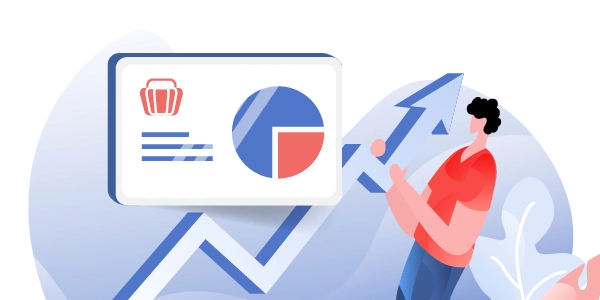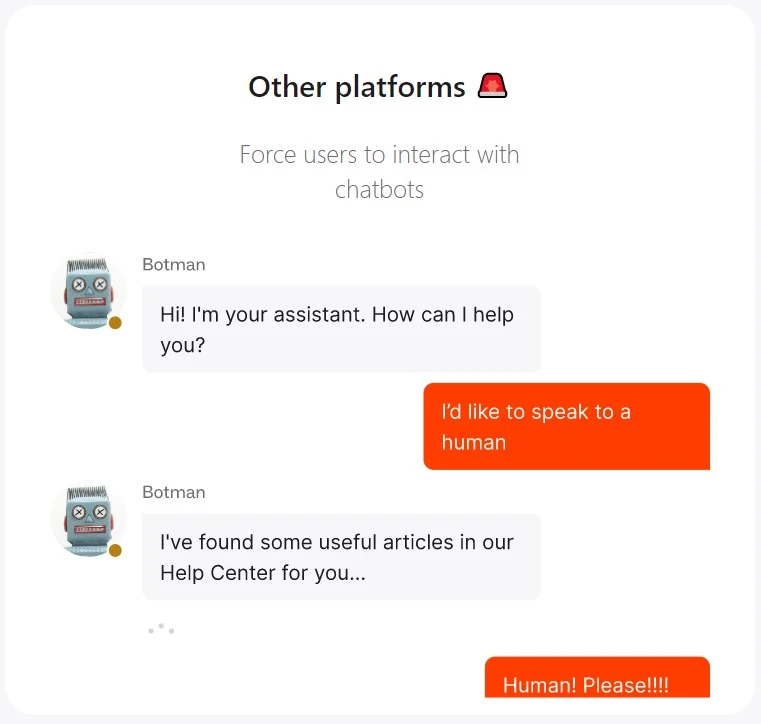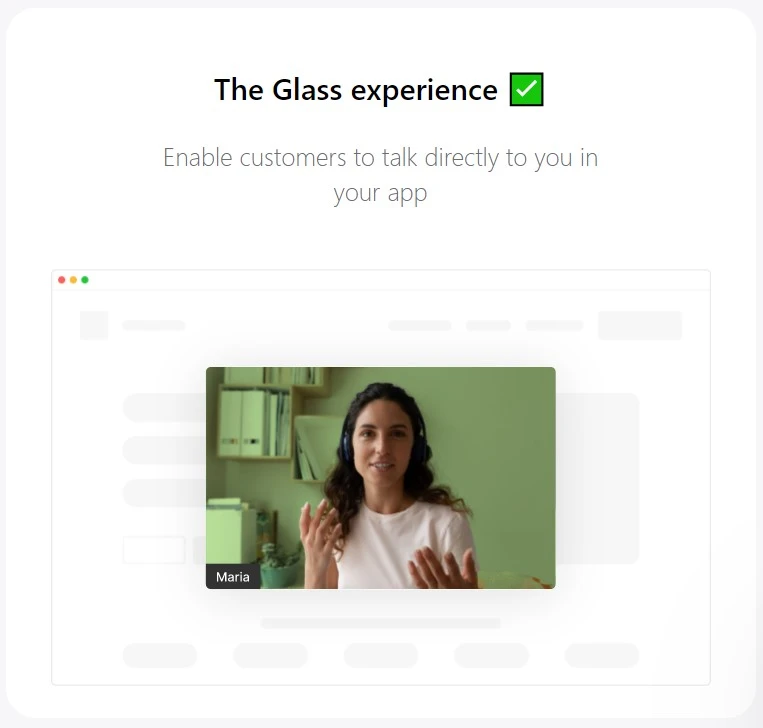
Product Led Growth vs Sales Led Growth: A Sales Reps Guide Ed Chessman January 25, 2023
Product-led growth and sales-led growth are two different business growth strategies for increasing software revenue.
Product-led growth is all about building a product that is so good and user-friendly that it sells itself, and usually initiates using free trials. On the other hand, sales-led growth focuses on using a sales team to actively sell a product to potential customers.
As we will see, product-led growth and sales-led growth don't share a lot of common ground, and there's really only one winning growth strategy being deployed by most SaaS companies today.
Sales-led growth vs. product-led growth: What are the differences in sales processes?

The sales process for product-led growth is focused exclusively on the end user. To start, a product must come with a clear value proposition targeting a specific user need or job to be done: this is me and this is what I can help you do. Next, our product must deliver a great product experience, and it needs to deliver value fast to deliver success in product-led growth.
Customer acquisition for product-led growth demands that a product must fit a specific need because no one buys Swiss Army products, meaning a product should focus on doing one thing and one thing only.
Driving product-led adoption starts by enabling our target audience to self-educate about a product, often in the form of short demos and great documentation with plenty of examples. It needs to be super easy for prospective users to learn what a product does and how it could fit into existing workflows and tools, meaning things like flexibility and easy integration are really important, too.
On the other hand, the sales process for sales-led growth focuses on hiring and deploying a sales team to engage and sell to customers, using well-planned cold calls, for example. Our entry point for an opportunity starts with the highest point we can reach in terms of power, influence, and decision-making. Sales-led growth involves multiple touch points across the customer, engaging and winning over each in lengthier sales cycles as compared to a product-led model.
The sales cycle for sales-led growth is all about establishing rapport, building trust and demonstrating capability, each of which takes time and resources. Well-trained sales teams able to control multiple stakeholders and priorities are critical to success and they don’t come cheap, so a shorter sales cycle is a highly sought-after goal of sales-led companies.
See also: Concierge Onboarding for SaaS: A Step-by-Step Guide
What drives product-led growth?

A product-led sales strategy demands products that are sticky to drive customer acquisition. They must deliver value continuously to keep the user coming back again and again. Frequent use creates familiarity and when coupled with constant value gives rise to customer loyalty. Organic growth is a crucial step to achieving success with product-led growth and it only happens when a product delivers both a great experience and tangible value. Now bring these happy new users together with others in community support channels, encourage them to share tips and customer success becomes organic, too.
And as long as the product continues to deliver a great product experience, user voices will grow ever louder until the "nirvana" breakout event of the product going viral. I say nirvana because product-led growth is all about creating a fully self-service sales environment, which scales automatically and doesn't require large amounts of additional resources like expensive sales teams. Technology to replace sales people. Magic, really.
See also: B2B Software Sales: A Quick Guide to Best Practices & Tools
What drives sales-led growth?

A sales-led model suits products that solve big problems. It starts with the marketing team providing the sales team with qualified leads. Sales reps take charge of leading sales meetings to drive opportunities down the sales funnel. The sales team is responsible for creating internal champions to help navigate complex organisational structures and align our product to company objectives and priorities. But that’s just the start as a product must undergo a detailed assessment to ensure it satisfies technical and business requirements.
A value proposition from the marketing team alone isn’t enough for sales-led growth because companies only invest in solutions with a clear and demonstrable return on investment. Oh no, for these are complex environments our sales team must fearlessly navigate. Once we've validated our solution, we need the approval of architecture committees, hope we survive stringent security reviews, and finally gain the hallowed green light status as an approved product and supplier. And then we need that final piece of magic to fall in place: budget approval.
Phew, I mean why would a sales-led company do all this hard work, right? It’s the big payoff, of course. You’re only putting teams in place to win these sorts of opportunities when there’s significant upside on the table. A sales-led strategy is also well suited to upselling existing customers.
What about market entry and pricing?

The sales process and customer journey for product-led sales both start by offering a free trial of the product, either limited by available features and/or consumption metrics, or by providing a free trial period. I strongly advise the companies I consult with to publish clear pricing, too, as most people will only invest time with a new product if they know up front what it’s going to cost if they want to continue.
Tracking and analysing product usage and performance in real-time lies at the heart of continuously delivering great experiences for a product-led company.

Growth is all about providing a frictionless sign up process to onboard new users fast. It’s a simple numbers game that pairs nicely with an attractive price point, too, and most product-led strategies make pricing easy to find early on in the customer journey.
The acquisition strategy of sales-led growth starts by advertising across multiple channels to create leads that enter a traditional marketing funnel. Sales qualified leads are measured against strict qualification criteria to ensure each sales team is focused and working on the best opportunities. Pricing is often based on multiple factors and rarely published for public consumption.
With a sales led company, product features and direction are aligned and prioritised to meet the needs of existing customers—and often the higher paying customers are given the loudest voice. Product feedback isn’t automatic, rather it is gathered by customer success teams and reviewed by product managers as part of a product improvement and roadmap process.
What are the success metrics of your product-led strategy?

Different metrics are used to measure success with each sales approach. While customer sign ups, logins and user retention are good early indicators for product-led growth, it’s the number of active users and the length of each product session that are of far greater importance. With product-led growth, active users is the golden metric of truth that a product is delivering real value. Monitoring and analysing every user interaction is crucial for product-led companies to identify where and how improvements can be made to the user experience.
Product-led companies prioritise the development and improvement of their product as the primary driver for growth.

As a result, they focus on building a strong product-market fit and a solid user base before considering customer acquisition cost (CAC). When a product-led company has achieved solid revenue growth and is experiencing accelerated growth in key target markets, it is a sign that their product is resonating with customers and gaining traction. At this point, it becomes important to start thinking about CAC to ensure that the cost of acquiring new customers is in line with revenue and profitability goals.
How does Glass.io help product-led growth?
Glass.io is a simple-to-install Javascript widget that makes it easy for sales reps and customer success teams to help new customers overcome high-friction adoption points.
Your onboarding team can watch visitors use your site in realtime and start an instant chat or video conversation when they need a hand. Glass.io gives both buyers and sellers an effortless human connection that stands out.


What are the success metrics of a sales-led strategy?
Success metrics for sales-led growth include the number of new leads, the number of first meetings scheduled and conducted, the number of demos, the number of prospects engaging with pilots or POCs, the number of proposals sent out, and finally, the number of contracts under negotiation.
Given the lengthier sales cycle and far more complex buying process as compared to product-led companies, these metrics are classically presented and analysed on a weekly basis at that Monday morning standup that every sales rep just loves.
Can you have a hybrid growth strategy?
What about a hybrid approach where we offer the best sales-led and product-led approaches? Can we employ both methodologies at the same time to achieve even greater success?
No, at least not in the beginning, because these two growth strategies are polar opposites. Consider the product messaging:
for product-led sales, we highlight the value and benefits as they apply to the end user.
for sales-led growth, with its entry point being senior management and project stakeholders, focuses on business benefits that can be realised through product adoption.
The go-to-market strategy and the composition of a sales team for sales-led growth require completely different skills: product advocates, digital marketers, and growth hackers are the new talents required for product-led growth.
The whole structure, flow and call-to-action of the product website is also different: product-led growth is focused on user sign-ups while sales-led growth is all about triggering visitors to schedule that first call or free demo session with the sales team.
Can you shift and become product-led?
Is it possible to shift to product led to achieve success?
Yes, but moving to product-led sales certainly doesn’t happen overnight. We’ve witnessed this happen with large software companies as they were eventually all forced to adopt cloud-first strategies or die. You know the ones… Oracle, SAP, Adobe, and the like. But today it’s no longer really even a choice, as “87% of buyers want to self-serve part or all of their buying journey” according to this 2021 B2B report from TrustRadius.

I was lucky to be part of an early startup that started with a sales-led approach but pivoted to a product-led growth strategy. It was a fascinating process to reimagine every aspect of the business. It demanded a complete overhaul of how we drove interest and demand. The biggest change was in our rewriting the messaging in tandem with delivering a freemium pricing model. There was no substitute for quality documentation and great customer support, having a great product is just the first piece of the complex puzzle of sales growth.
What about network effect?
Another phenomenon that’s only possible with product-led sales is achieving hyper-scale growth, and this is arguably only possible for products with a strong network effect. Slack, GitHub and LinkedIn are great examples—the value of these products grows with every additional user. However, it’s far beyond this article’s capabilities to get into all of the magical happenings of products with strong network effects so I’ll leave that subject for another time.
Product-led growth is a relatively new strategy born out of the shift to cloud-based SaaS products. It didn’t really exist before the rise and mass adoption of cloud services from AWS, GCP, and Azure. The cloud provides the perfect delivery platform for any product to reach any target market. And delivering a SaaS product means we can wire in all the tracking and analytics required to ensure the delivery of the perfect customer experience.

Product-led growth is also the perfect evolution of agile development, where engineering teams can quickly test and improve new features in a truly data-driven manner.
One clear winner
Sales-led growth, I’m afraid your time is up, and you're just not suitable to driving revenue for SaaS businesses. The product-led era has well and truly arrived, and you just can't compete with the superiority of the product-led growth model.
We respect that you’ve built revenue mountains for countless products, but I’m afraid you just can’t do what new product-led growth can, and the benefits are just too compelling:
Self-service model means no sales rep is required & lower customer acquisition costs
Data-driven product decisions fuelled by real-time user insights
Hyper growth supported by default
Now, product-led growth… where's a good place to get a drink around here?
Frequently asked questions
What is the definition of product-led growth strategy?
Product-led growth is an emerging sales strategy that focuses on driving revenue through the product itself. Unlike traditional sales-led approaches, where the customer must first engage with a salesperson and then be convinced to buy, product-led growth is all about making the product the main driver of sales.
What is the definition of sales-led growth strategy?
Sales-led growth is a traditional strategy in which organizations focus on driving sales via direct outreach and customer contact. This approach relies on sales teams to engage with customers, build relationships, and ultimately close deals. This strategy is often used when the product offerings are complex or require high-touch customer engagement.
Ed Chessman is founder of cowXsales, a startup sales consultancy. He has created and closed over $22M in new business revenue leading sales for global software companies and early stage startups. Early stage tech startups are Ed’s true love where he enjoys working with founders to build great products. Ed lives on the south coast of England where he enjoys spending time with his family, running in the South Downs, and trying to master the art of sea swimming.
About Glass.io
With Glass.io, you can reach across the screen and help visitors make a buy decision. See exactly how visitors use your website in realtime, trigger a notification to the right sales rep when they show buying intent, and start a personalized conversation (chat or video) at the perfect moment.
Plug your leaky sales pipeline by engaging with your website visitors while you have their attention. Sign up for an account here.